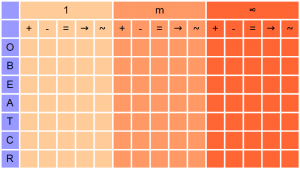Disruptive innovation breakthrough from incremental improvements
Disruptive innovation breakthrough from incremental improvements. The 3D controller in the video uses brute force pattern recognition and cheap hardware. It’s what Ray Kurzweil claims will lead to the Singularity.
Cheap camera based 3D controllers have been on the market for close to 2 years. The interesting part of this video is how they do it. They have a large database of images for hand positions then compare what the camera sees to an image in the database. That is an extremely crude approach but the speed of cheap hardware makes it economical.
Most people view breakthroughs as rare and hard to achieve. Using the random creativity based approach that is very true. Business leaders want the disruptive breakthroughs because of the huge profit potential. If you are not using Predictive Innovation your only option is incremental improvements and mediocre little to no increases in profits. However you can achieve breakthroughs with incremental improvements.
A breakthrough occurs when your product allows the customer to do something never before possible. There are two ways to achieve breakthroughs, Predictive Innovation helps you with both. The first way is a new approach to the problem. One example of a different approach creating a breakthrough is engines and airplanes.
 When the Wright brothers built their first airplane, steam engines had been around for a long time. The Wright brothers did not use a steam engine because the power to weight ratio was not good enough to get the heavy steam engine and the boiler full of water to fly. They used an internal combustion engine, the same type used for most things today. Unless you have an electric motor, your car or lawnmower has an internal combustion engine.
When the Wright brothers built their first airplane, steam engines had been around for a long time. The Wright brothers did not use a steam engine because the power to weight ratio was not good enough to get the heavy steam engine and the boiler full of water to fly. They used an internal combustion engine, the same type used for most things today. Unless you have an electric motor, your car or lawnmower has an internal combustion engine.
Kites and wings were well known for centuries before the invention of the airplane. The limiting factor for flight was the power to weight ratio. The internal combustion engine was a breakthrough technology, a different approach, that allowed the breakthrough of an airplane to be built.
 Digital music and digital video was a massive breakthrough but it was made possible with incremental improvements.
Digital music and digital video was a massive breakthrough but it was made possible with incremental improvements.  Microprocessor technology hasn’t fundamentally changed in 50 years. Improvements have been
Microprocessor technology hasn’t fundamentally changed in 50 years. Improvements have been
made by incrementally increasing the number of transistors and clock speeds for the chips. When the
processing power became enough to handle 16 bits at 44,000 per second it was possible to play digitally recorded audio. This made audio CD’s possible. When the speed increased more, video became feasible. These were incremental improvements that made the breakthrough possible.
How does Predictive Innovation help you find breakthroughs? Predictive Innovation breaks down the idea space into the 5x3x7 dimensions for anything you can make or do. The 5x3x7 grid produces 105 boxes, each one describes a type of innovation. It’s a map of the idea space. Just like a road map grid helps you find things. On a road map you might look of the name of a city and see that it’s at C5 on the map grid. The dimensions of Predictive Innovation are the same way. You can look up anything in the idea space by using the 5x3x7 grid.

Breakthroughs happen when something different is possible. If you change from one of the 105 types to a different type that will be a breakthrough. So creating a breakthrough is as simple as choosing a different box. How does that help you use incremental improvements to make breakthroughs? It shows you the entire idea space. You will know what is possible and what to expect to make it ready to build and sell.
Using Predictive Innovation you can see which paths lead to breakthroughs. You can easily make low-risk incremental improvements and collect profits while you prepare for the big breakthrough you know will happen.




 Predictive Innovation Training
Predictive Innovation Training Predictive Innovation: Core Skills Book
Predictive Innovation: Core Skills Book RoundSquareTriangle.com
RoundSquareTriangle.com